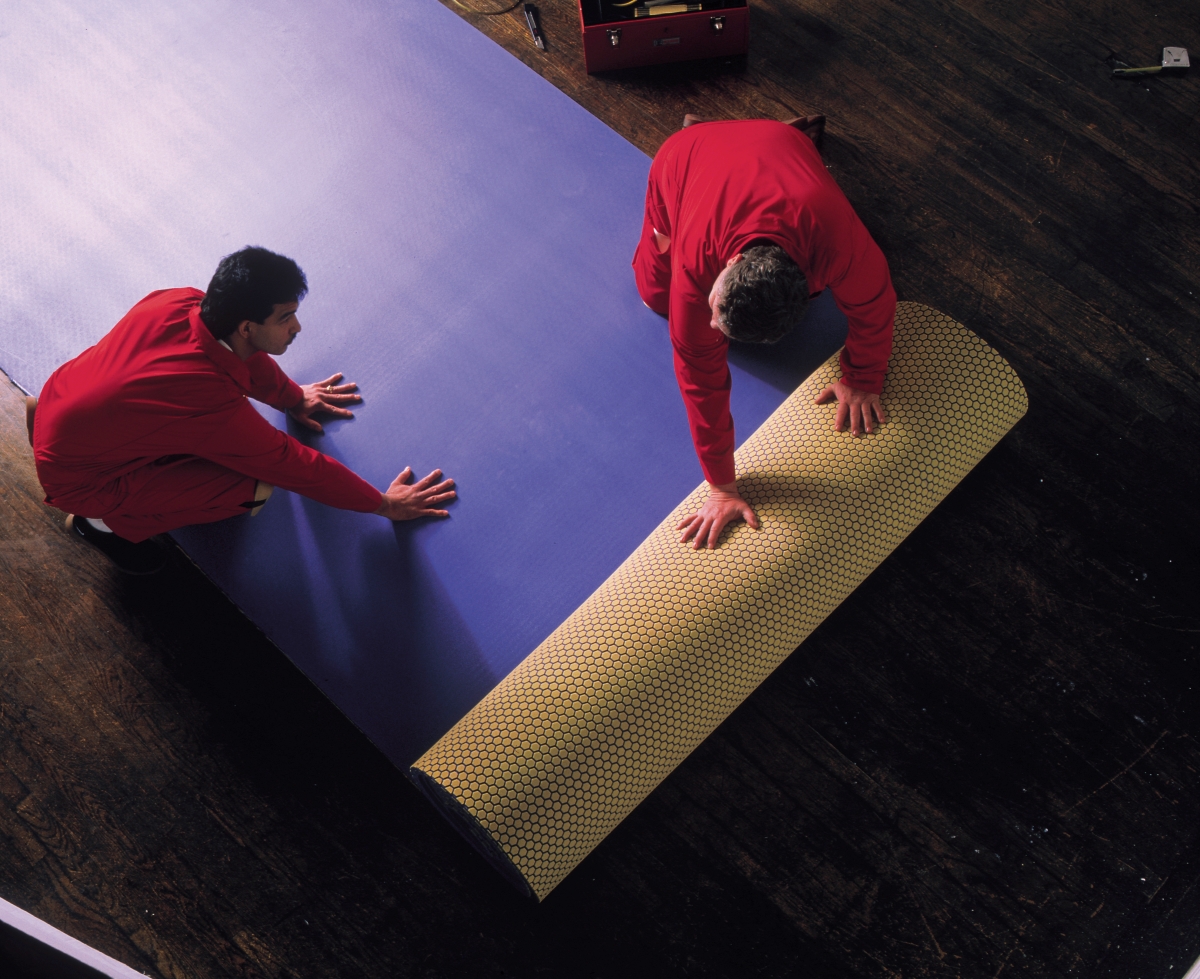We may earn revenue from the products available on this page and participate in affiliate programs. Learn More ›
Paying attention to what’s underneath your floors can have a profound effect on noise reduction and sound control in your home.
Like other room components, floors respond to the four steps of sound deadening, which include absorption, blocking, breaking, and isolating sound. When attempting to control noise and noise transmission, it is important to consider each of these areas and how you can use them to reduce sound transfer.
Sound Absorption
An easy solution to quiet a noisy floor is to install carpet and padding. The quality or thickness of the underlying pad will directly impact the degree of noise control and the wear of your carpet — the heavier the pad, the longer the carpet will last and the quieter your room will be. An additional layer of the acoustical underlayment can also be installed beneath the pad for added sound reduction.
Noise Blocking
When adding the acoustical board, cut the pieces to fit the room’s outline and leave 1/8- to ¼-inch gaps around all edges. Then use an acoustic sealant or silicone on the back of the acoustical sound board before nailing or screwing the boards in place. Once the new acoustical subfloor is in place, seal the edges along the 1/8th-inch gap with silicone or acoustic sealant to both block and break the spread of noise from one layer to the next. Once the silicone sets, new tack strips can be installed and the pad and carpet stretched into place as usual.
In existing homes, the only practical solution may be to approach the problem from below. Sound-deadening insulation or sound-muffling mats can be added beneath the sub floor between the floor joists. This solution may only be possible between the first floor and the basement where the floor joists are accessible. If the basement has a suspended ceiling, the existing ceiling tiles can be temporarily removed to weave insulation in between the joists.
Appliances like washers, dryers, and dishwashers on first or second floors may make sound deadening an extra challenge, but manufacturers have conquered much of the problem with rubberized mats that are placed beneath the machines.
Sound Breaking
Squeaky floors occur as homes age and components pull apart. Squeaks can come from gaps and separation between the surface flooring and the subfloor or gaps between the subfloor and the joists. Eliminating floor squeaks is easiest from below if the joists and subfloor can be accessed. First have someone walk the floor to locate the squeak. Once located, decide what problem is causing the noise. If it is a gap between the subfloor and the joists, use a shim shingle and push it between the floor joist and the subflooring. Gently tap the shim home to secure it and eliminate the void causing the squeak.
Another way to stop squeaks that occur between the joist and subfloor is to use a 3-1/2 inch to 4-inch drywall screw angled into the joist and subfloor where they meet so that it pulls the joist and subfloor together. Be careful not to penetrate the flooring above when attempting this fix.
If the squeak is because of gapping between the finish flooring and the subfloor, you’ll have to fix it from the finished side. If the subfloor is exposed, walk across it to locate any squeaks. With a power screwdriver or drill, drive a 3-1/2 inch drywall screw through the subfloor into the joist below. To locate joists, use a stud finder, look for the line of nails along the joists, or find the joints where the plywood or oriented strand board meets.
With carpeting, getting to the squeak is a little more difficult, but not impossible. There are a number of products that allow for a coarse-thread screw to be screwed through the carpet and the pad into the sub floor. The screw threads are coarse to prevent the thread from catching the carpet nap and twisting it around the screw. If you’re hesitant to trust the technology, try one in a corner or inside a closest where a mistake won’t show. Once satisfied that it won’t catch on your carpet, go ahead and drive one home in the offending area. Once the screw is in place, the top part of the shank breaks off below the carpet line to make the fix invisible.
Approaches in New Construction
Of course, the real key to proper sound deadening for floors is to do the work during new construction when subfloors and joists are exposed. A number of manufacturers offer sound-isolating floor mats and anti-sound boards that are installed beneath new floors to keep sound locked in place, rather than transmitting it to upper or lower levels.
Mats or sound-deadening underlayments may be constructed of lightweight closed-cell foam, recycled rubber, or heavy barrier vinyl. When properly installed below one or two layers of 1/2-inch sub floor, mats will isolate vibration and noise from foot falls and dropped skillets. Sound-reducing mats can be used beneath hardwood floors, carpet with pad, ceramic tile, vinyl, or wood-laminate flooring.
Another component best installed during new construction is an acoustical sound board, which is placed beneath the sub floor. The sound board, like other subflooring components, isolates the sound before it has a chance to reflect up into the room.


